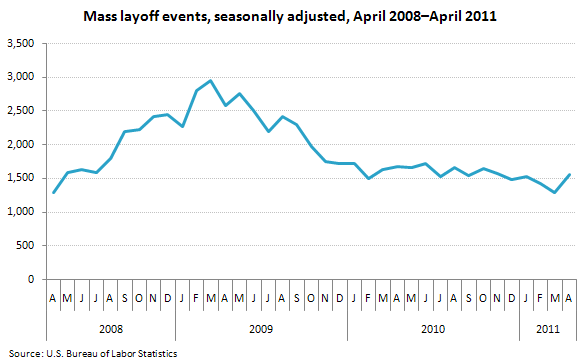Mass Layoffs Hit Manufacturing Hardest
In April, 244,000 non-farm payroll jobs were added to the economy. But that doesn’t mean that no one lost their job. Unfortunately, that is the net number of jobs added to the economy; actually many more jobs were added in April, but they were offset by the many jobs that were also lost.
In fact, the number of mass layoff actions (i.e. a layoffs of at least 50 people by a single employer) increased by 278 from March.
Employers took 1,564 mass layoff actions in April involving 143,927 workers, seasonally adjusted, as measured by new filings for unemployment insurance benefits during the month. This led to an increase of 25,404 initial unemployment claims from the previous month.
In April, 327 mass layoff events were reported in the manufacturing sector, seasonally adjusted, resulting in 35,022 initial claims; both figures increased over the month. The manufacturing sector accounted for 23 percent of all mass layoff events and 25 percent of initial claims filed in April.
This is especially disappointing, considering that productivity in the manufacturing sector has been going up consistently over the last year, with an increase in productivity during the first quarter of 6.3 percent. Increased productivity should eventually lead to either increased employment or increased wages, or both. Whether this drop in employment in the manufacturing sector will lead to a dip in productivity, or is just a blip in the curve on the way to increased wages and employment, only time will tell.


